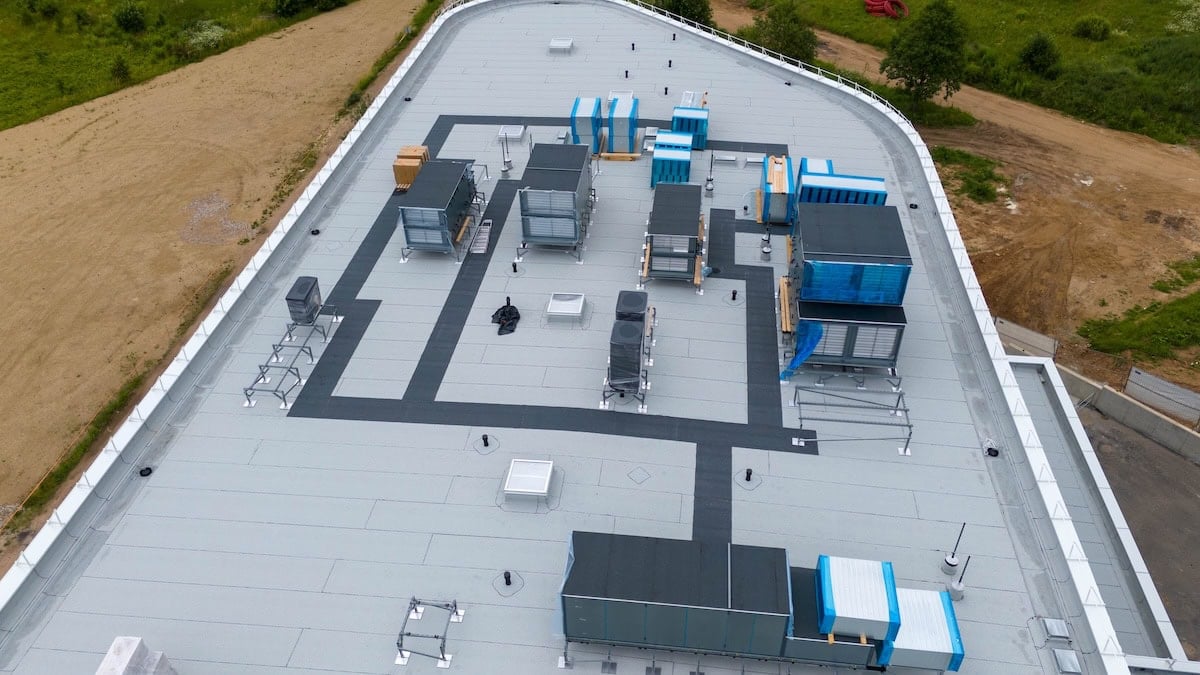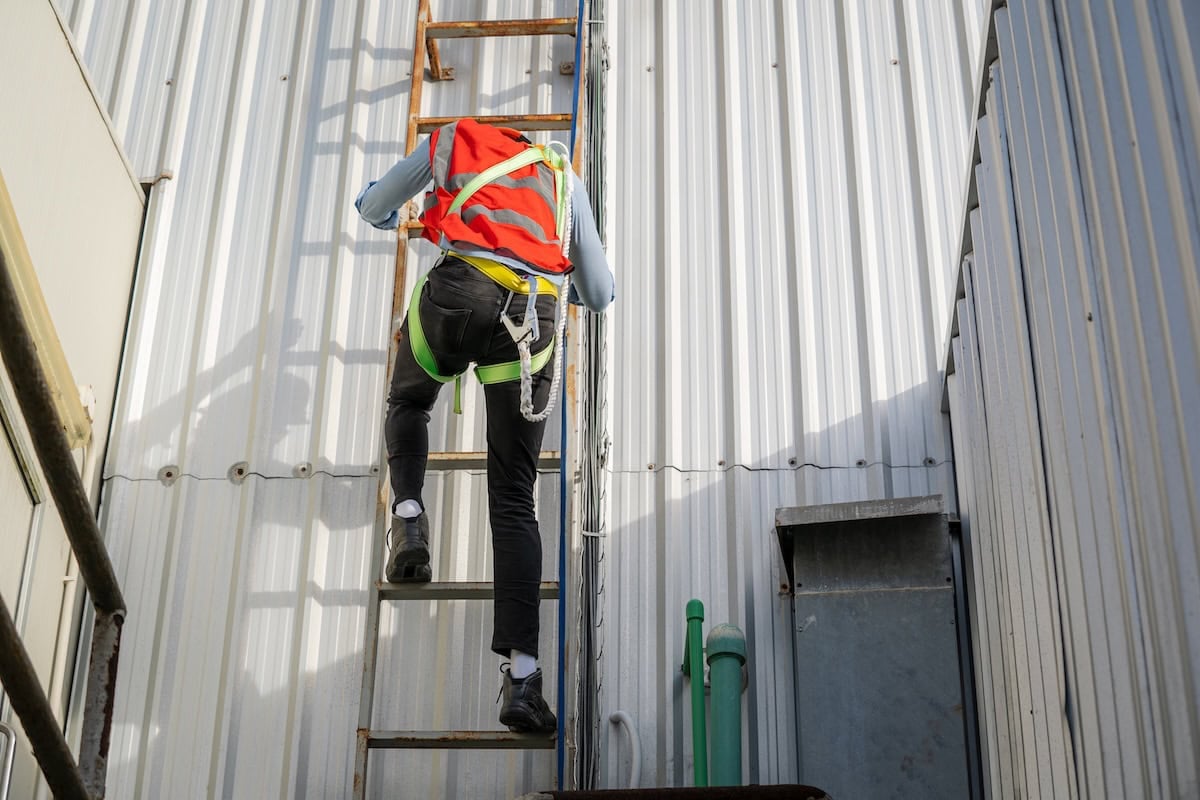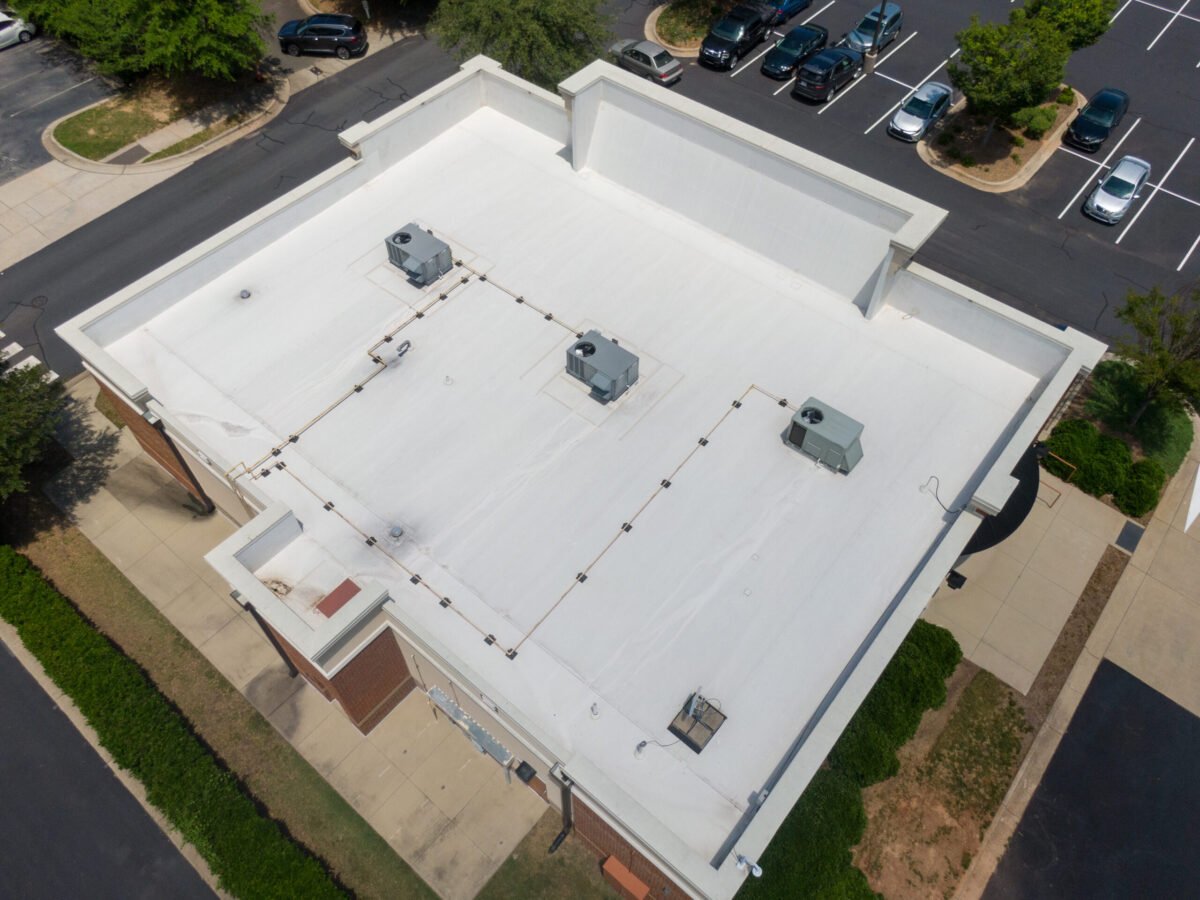For property owners in Durham, NC and surrounding areas, the roof of your commercial building is one of the most valuable assets you manage. It protects everything beneath it—tenants, inventory, equipment, and your business itself. Yet, it’s often overlooked until a leak or major issue occurs. That’s why scheduling a commercial roof inspection isn’t just a maintenance step—it’s a crucial part of protecting your investment.
Whether you manage one property or several, understanding what goes into a full inspection can save you time, money, and frustration down the road.
In this guide, you’ll learn:
- What makes commercial roof inspections essential
- A step-by-step look at the full inspection process
- Key warning signs to watch for between inspections
- How regular evaluations can prevent costly roof replacements
- When to call in a local expert for support
Why Regular Commercial Roof Inspections Are Essential

Commercial roofing systems are built for performance, but they’re also complex. Between HVAC units, flashing, drains, and wide flat surfaces, there are countless points where issues can start unnoticed. Regular inspections are the most effective way to identify problems early and maintain your roof’s warranty coverage.
Here’s why every property owner should take inspections seriously:
- Protects Your Investment: Commercial roofs often cost hundreds of thousands of dollars. Routine inspections safeguard that investment by catching minor issues before they turn into expensive replacements.
- Minimizes Business Disruption: Addressing small leaks or punctures early means fewer emergency repairs and less downtime for tenants or employees.
- Extends Roof Lifespan: Regular maintenance and documentation can add years to a roof’s service life.
- Ensures Code and Warranty Compliance: Many manufacturers require periodic inspections to keep warranties valid.
- Improves Budget Forecasting: Scheduled inspections help you plan maintenance and capital expenses with fewer surprises.
6 Step Process of a Professional Commercial Roof Inspection
Every roof is unique, but the inspection process follows a consistent framework. Below is an inside look at how professional roofers evaluate, document, and report on the health of your commercial roof.
1. Preliminary Consultation and Roof History Review
Before setting foot on the roof, the inspection team reviews your building’s background:
- Age of the roof and any prior repairs
- Manufacturer and type of roofing material (TPO, EPDM, modified bitumen, metal, etc.)
- Warranty status and maintenance history
- Known problem areas or prior leak reports
This step ensures inspectors focus on potential weak spots specific to your system.
2. Safety Setup and Access Planning
Commercial roofs require careful preparation before inspection. Roofers secure access points, verify ladder placement, and check safety gear.
- OSHA-compliant fall protection measures are set up.
- Weather conditions are reviewed to ensure safe work.
- Building access permissions and tenant notifications are coordinated.
This careful setup not only protects the crew but also ensures no damage occurs during inspection.
3. Exterior Evaluation
The inspection begins with a visual review of the exterior components:
- Flashing and Seals: Inspectors check for cracks or gaps around vents, skylights, and HVAC units.
- Parapet Walls and Edges: These areas are prone to wind uplift and water infiltration.
- Drains and Gutters: Blockages are identified that may cause ponding water or overflow damage.
- Penetrations: Any openings through the roof membrane are checked for deterioration or movement.
Even minor separation around flashing can lead to moisture intrusion and insulation damage if left unresolved.
4. Surface and Membrane Inspection
Next, the roof surface itself is evaluated for visible damage or wear.
- Tears, Blisters, or Punctures: Found commonly around seams or heavy traffic areas.
- Ponding Water: Indicates poor drainage and can shorten membrane life.
- Seam Separation: Especially critical for single-ply systems like TPO or PVC.
- Surface Granule Loss: For modified bitumen or built-up roofs, worn granules expose layers beneath to UV damage.
Inspectors may use infrared imaging or moisture meters to detect water trapped beneath the surface—something invisible to the naked eye but highly destructive over time.
5. Structural and Interior Check
The condition of the building below the roof can reveal clues about what’s happening above. Inspectors may:
- Examine ceiling tiles and insulation for signs of moisture staining or sagging.
- Check load-bearing supports for corrosion or deformation.
- Inspect attic or crawl spaces for airflow and humidity balance.
If a leak has developed, this step helps trace its source and evaluate any secondary damage.
6. Documentation, Reporting, and Maintenance Plan
A true professional inspection doesn’t end when the crew leaves the roof. A detailed report is compiled, typically including:
- Photos of every issue found
- Roof condition summary and grading
- Repair recommendations and estimated costs
- Timeline for future maintenance and reinspection
This documentation serves as proof of ongoing care—something insurance providers and warranty holders often require. It also gives you a roadmap for proactive upkeep rather than reactive repairs.
Beyond the Basics: Factors That Affect Roof Condition

While inspections reveal the current state of your roof, understanding what causes wear and tear helps prevent future problems.
Roof Traffic and Equipment
Commercial roofs often support HVAC systems, satellite equipment, and foot traffic from maintenance teams.
- Protective Walk Pads: Prevent damage from repeated footsteps.
- Clearly Marked Access Routes: Reduce accidental damage to membranes.
- Routine Clean-Up: Removing debris prevents punctures and standing water.
Weather and Environment
Durham’s mix of humid summers, heavy rain, and occasional freezing temperatures can stress roofing materials.
- UV Exposure: Breaks down surface coatings over time.
- Thermal Expansion: Temperature swings cause materials to expand and contract.
- Wind Uplift: Strong gusts can loosen edge flashings and fasteners.
Roof Design and Drainage
Flat and low-slope roofs must be properly engineered to drain water efficiently. Even a slight slope issue can create ponding areas.
- Ensure drains and scuppers remain clear of debris.
- Schedule post-storm inspections to verify performance.
Material Selection
The lifespan of your roof depends largely on the system in place:
- TPO or PVC: Typically 20–30 years with proper maintenance.
- EPDM Rubber: Can last 25–35 years.
- Metal Roofing: Often 40–50 years or more.
- Built-Up Roofing (BUR): Around 20 years, depending on layers and exposure.
Maintenance Strategies That Maximize Roof Longevity
Inspections are only part of the equation. Following through with maintenance keeps small problems from growing into structural threats.
Scheduled Preventive Maintenance
Develop a regular maintenance plan with your roofing contractor:
- Semi-Annual Inspections: Typically in spring and fall.
- Post-Storm Checks: After major weather events.
- Routine Cleaning: Remove leaves, branches, and debris from drains and gutters.
Keeping your roof clean and inspected reduces the likelihood of emergency repairs during peak business hours.
Timely Repairs
Delaying repairs, even for small issues, can lead to water infiltration that compromises insulation and decking.
- Patch punctures immediately.
- Replace damaged flashing before leaks start.
- Reapply protective coatings as recommended.
Recordkeeping and Warranty Compliance
Many commercial roof warranties require documentation of inspections and maintenance. Keep a digital log including:
- Dates of each inspection
- Reports and repair receipts
- Photos of completed work
This not only protects your warranty but can also streamline insurance claims if damage occurs.
Budgeting for Replacement
Even the best-maintained roof will eventually reach the end of its life. Use inspection data to plan ahead for replacement costs over time.
- Budget 1–2% of roof replacement value annually for maintenance.
- Get a professional estimate every 10 years to update your reserve planning.
How to Know When It’s Time for a Professional Inspection

Not every business owner knows when to schedule an inspection. While twice a year is ideal, there are specific triggers that make it non-negotiable.
- After Severe Weather: Hail, wind, or heavy rain can cause hidden damage even if no leaks appear. A professional inspection ensures no seams or fasteners have lifted.
- Before or After Roof Work: If HVAC contractors, electricians, or satellite installers have been on the roof, schedule a follow-up inspection. Unintentional damage from equipment or foot traffic is common.
- Before Buying or Leasing a Property: A roof inspection is essential for due diligence. It can reveal potential liabilities before you sign a contract.
- When Leaks or Odors Appear: Water intrusion or musty smells indoors often point to roof problems. Early detection prevents interior damage and mold growth.
- As Part of Annual Budget Planning: An end-of-year inspection helps you plan maintenance budgets, replacements, and insurance reviews effectively.
Safeguard Your Investment with Expert Commercial Roof Care
A commercial roof inspection isn’t just about checking boxes—it’s about protecting your property, ensuring safety, and extending the life of a major asset. With North Carolina’s unpredictable weather and the demands of flat commercial roofing systems, regular inspections are one of the smartest investments a property owner can make.
When performed by trusted local professionals, inspections help you avoid downtime, control costs, and maintain the integrity of your building for decades.
If your roof hasn’t been inspected recently—or if you’ve noticed signs of wear—now is the perfect time to act. Schedule a professional evaluation and get a clear picture of your roof’s condition.
For expert assistance or to request an inspection, contact us today to speak with a commercial roofing specialist serving Durham, NC and surrounding areas.

